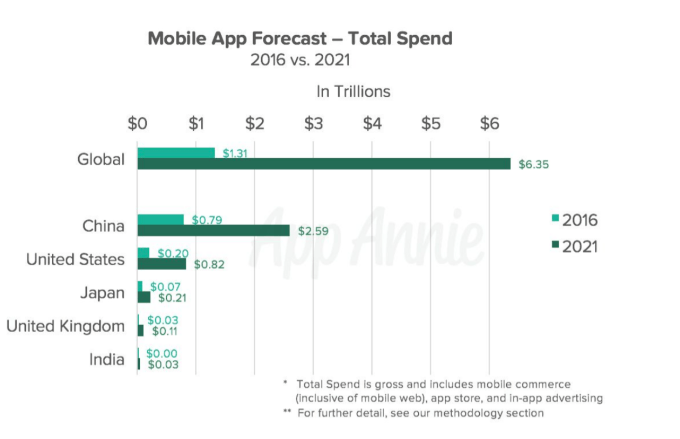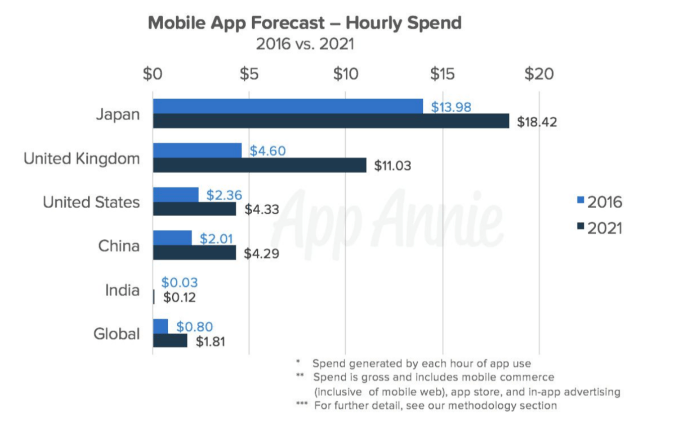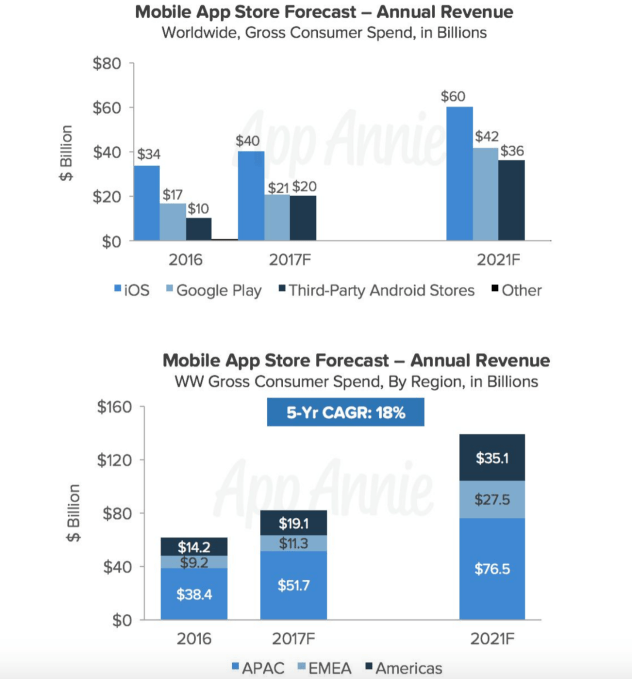Marketers must prepare for these trends and for the stress they will put on existing systems, processes and personnel. JL
Sarah Perez reports in Tech Crunch:
These figures represent more than just the revenue generated through app stores. It also took into account other forms of monetization, like in-app ads and mobile commerce. Today, the 3.4 billion app users, spend $379 in apps across all three forms of monetization last year, or $0.80 per hour, per person. This will grow to $1,008 per user by 2021.Consumer spend across app stores will reach $139 billion by 2021. Google Play combined with third-party Android marketplaces is expected to overtake the iOS App Store this year, largely thanks to China.
Today, the 3.4 billion app users, on average, spend $379 in apps across all three forms of monetization last year, or $0.80 per hour, per person. This will grow to $1,008 per user by 2021.
This figure, of course, varies wildly from market to market. In Japan, for example, users generated an average of $13.98 per user per hour, and they spent more than 68 billion hours in apps in 2016. Meanwhile, the U.S. and China generated $2.36 per user per hour, and $2.01, respectively.
The report pegs the increases expected in the years to come to be especially impacted by the shift of physical transactions to mobile ones. App Annie noted in particular how Alibaba had recently announced that mobile accounted for 79 percent of the total transaction value generated by its retail marketplaces in China in fiscal year 2017, which was up 65 percent from the last fiscal year.
It also believes western markets will lag behind this shift, including consumer spending and ad spending’s move to mobile. This is because, here, we’re still wrapped up in legacy systems for things like banking, payment transfers, food purchases, and because a lot of the wealth is still concentrated in an older population, who is slower to move to mobile.
Developing markets aren’t as bogged down by these legacy systems, and are building infrastructure designed for mobile, the firm explained.
Mobile commerce was cited as the single largest driver of growth for the app economy, growing from $344 per user to $946 by 2021. Asia will grow the quickest, reaching $3.2 trillion in 2021, followed by the Americas hitting $1.7 trillion, then EMEA (Europe, Middle East, and Africa) which will reach $1.0 trillion.
Consumer spend across app stores will grow as well – rising 18 percent to reach $139 billion by 2021. During this time, the iOS App Store will remain the largest single store, growing to over $60 billion; however, Google Play combined with third-party Android marketplaces is expected to overtake the iOS App Store this year, largely thanks to China.
In the app stores, games will continue to drive revenue, growing from $50 billion in 2016, to $105 billion in 2021. Non-game revenue will triple, however, from $11.5 billion in 2016 to over $34 billion in 2021, with apps for video, music, dating, education, and productivity leading the way.
























0 comments:
Post a Comment